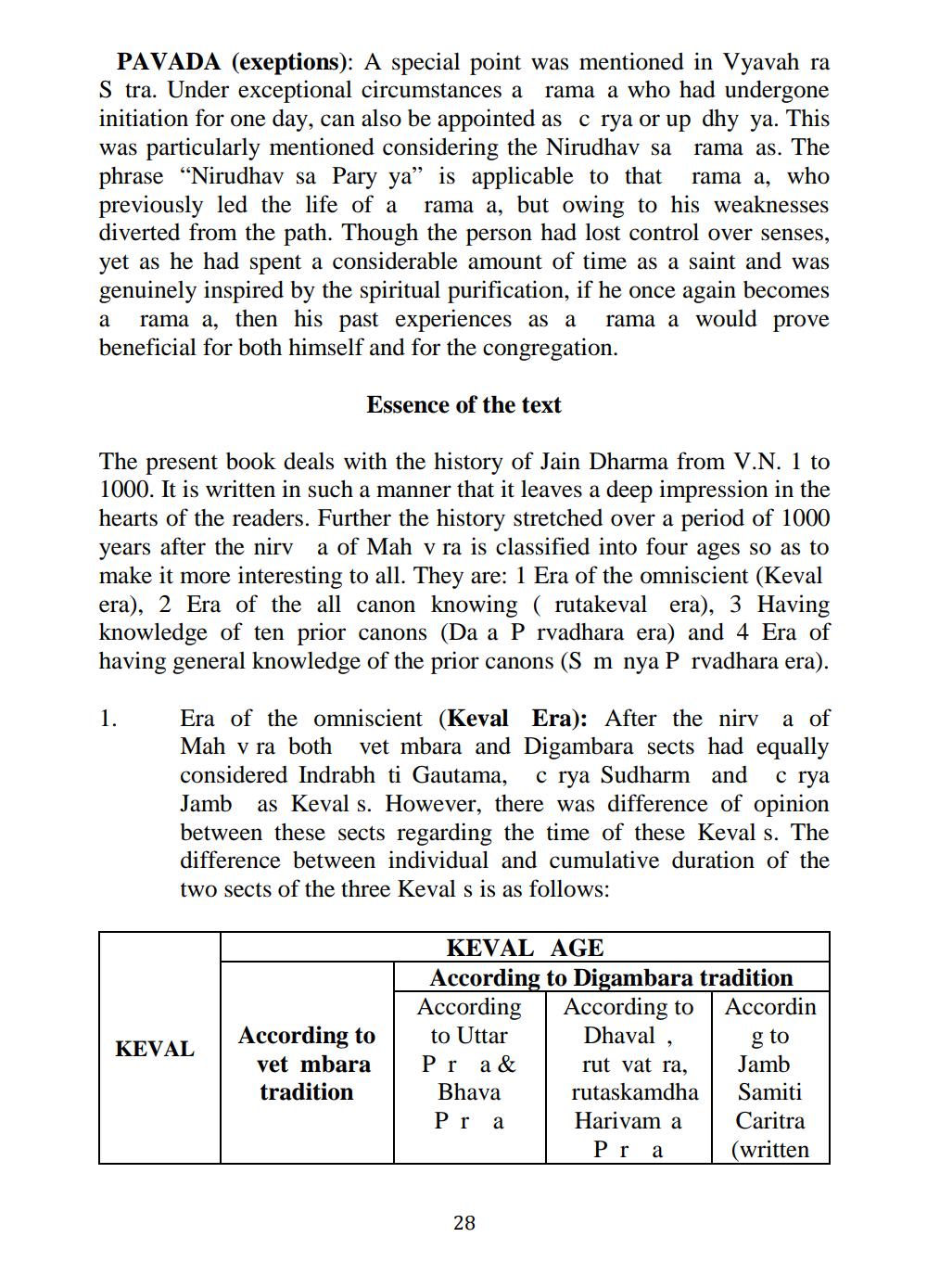________________
PAVADA (exeptions): A special point was mentioned in Vyavah ra S tra. Under exceptional circumstances a rama a who had undergone initiation for one day, can also be appointed as c rya or up dhy ya. This was particularly mentioned considering the Nirudhav sa rama as. The phrase “Nirudhav sa Pary ya” is applicable to that rama a, who previously led the life of a rama a, but owing to his weaknesses diverted from the path. Though the person had lost control over senses, yet as he had spent a considerable amount of time as a saint and was genuinely inspired by the spiritual purification, if he once again becomes a rama a, then his past experiences as a rama a would prove beneficial for both himself and for the congregation.
Essence of the text
The present book deals with the history of Jain Dharma from V.N. 1 to 1000. It is written in such a manner that it leaves a deep impression in the hearts of the readers. Further the history stretched over a period of 1000 years after the nirv a of Mah v ra is classified into four ages so as to make it more interesting to all. They are: 1 Era of the omniscient (Keval era), 2 Era of the all canon knowing ( rutakeval era), 3 Having knowledge of ten prior canons (Da a Prvadhara era) and 4 Era of having general knowledge of the prior canons (S m nya P rvadhara era).
1.
Era of the omniscient (Keval Era): After the nirva of Mah v ra both vet mbara and Digambara sects had equally considered Indrabh ti Gautama, crya Sudharm and c rya Jamb as Keval s. However, there was difference of opinion between these sects regarding the time of these Keval s. The difference between individual and cumulative duration of the two sects of the three Keval s is as follows:
KEVAL
According to vet mbara tradition
KEVAL AGE According to Digambara tradition According | According to | Accordin
to Uttar Dhaval, g to Pra & rut vat ra,
Jamb Bhava rutaskamdha Samiti Pra Harivam a Caritra
Pra (written
28




